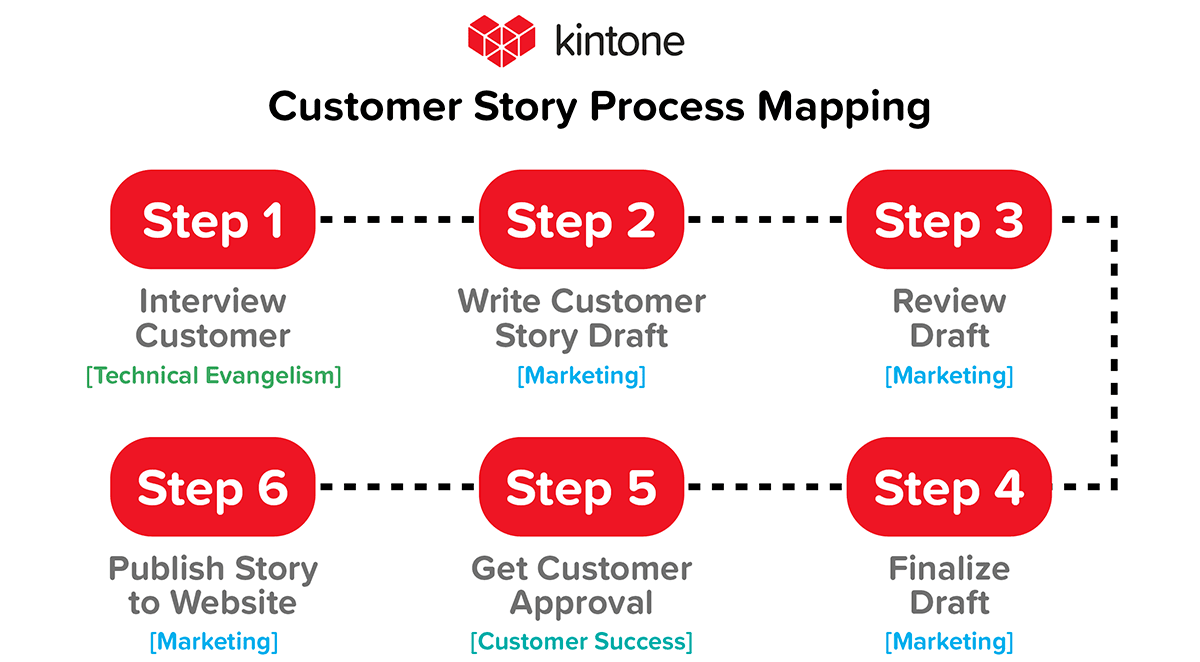There is something so satisfying about fixing something that is broken. No matter your level of technical prowess or how complex the “something” is, it just feels good to fix things.
However, we’re often guilty of tolerating broken things and not taking the initiative to go in and fix them, especially when times get busy. When a broken process or system involves other team members or stakeholders, it gets even trickier.
So how do you even start to tackle redesigning something like that? It’s all about baby steps. We’ve laid out a clear outline of steps to help you start fixing that pesky work process that is giving you grief every day.
1. Identify that something is broken.
This might sound obvious, but think about it this way: maybe you know a certain process is terrible, but you just haven’t pinpointed which parts aren’t working. Pick a process that’s causing you pain.
Now it’s time to play process detective. Find out as much as you can about the history behind this process. Why is it done this way? Maybe your team has tried other ways in the past that haven’t worked. Or has it just always been done this way? All of this background information will help you move forward.
You should also identify all the people involved in this process, including the people you need to approve any changes. How flexible is the process? Find out which steps you can change and which ones you can’t.
"We still had a paper-based system we were just pretending was digital. So we handled records and information the exact same way we would have handled a piece of paper. Only now we did it with computers. This faux-digital process couldn’t handle the volume and level at which we were doing business. It was unnecessarily convoluted, and it was setting us back." - A-B Emblem
2. Map out the process.
Write out each step of the process, including details about each stage and each step within that stage. Who manages each task? Which tools do you use for each step?
Here’s an example of how to start, using a real-life, cross-departmental process at Kintone.

Our Customer Stories page is where you can read case studies of our customers and their results with Kintone. This is a map of how we get those published, start to finish.
In addition to the info above, you should also list out “where” (digitally or otherwise) the step actually happens, and where the info is saved. For example, the customer interviews in step one happen on Zoom calls. The recordings are then saved on Kintone in our Customer Stories database app. Next, the customer story is drafted and reviewed in a word processor and then saved again on Kintone. And so on and so forth. These details on the tools and applications used for each step can help you eliminate redundancies later on and streamline your process.
Now that you’ve mapped it out, which steps are causing issues? Is there a bottleneck? Is the problem caused by the design of the process or the execution of it? Are there extra unnecessary steps?
The goal of this redesign is to streamline, streamline, streamline. Info on the current status should always be accessible to everyone involved without having to email someone about it.
IMPORTANT NOTE: You also want to eliminate data silos by keeping the process in one centralized location (as much as possible anyway). Conversations about the process should also happen in one designated place to keep everything organized and easy to find.
"If one of the training resources I created had a broken website link, updating everyone about it turned into a game of telephone. Our volunteers had to tell our student leadership team, who then passed the message on to our co-presidents, who finally alerted me so I could fix it. It just wasn’t efficient." - Musical Empowerment
READ ALSO: Why Projects Fail: Why Weak Communication Kills Projects & How to Solve It
3. Reimagine the design.
If you had a magic wand, what would the ideal version of this process look like? Bring in the other people involved and map out the ideal, cleaned-up version. A diagram is essential, especially if it’s a sophisticated process. Are there any steps you can automate or eliminate completely?
For our customer story process, we bypass having to email each other for status updates by having the status clearly labeled for each task in our project tracking app. This means we know who it’s assigned to at any given time and what step they’re working on. We also set up automatic notifications to let you know when it’s your turn to work on it.
Mark any critical control points or areas where there are strict requirements. Where might you experience issues that need some extra buffer time? For example, maybe you need to build in a little extra time to have someone proofread an email before it goes out.
Related post: Six Signs Your Project Management Workflow Process Needs a Refresh
4. List out the tools you need.
Once you’ve drafted the optimal new version of your process, figure out what tools you need to get it implemented. If you already have everything you need, congrats! You can move on to the next step.
If you do need a new tool, program or platform, what are your options? What are the limitations of the tools you have available? What about cost constraints? If you’re comparing multiple software solutions, take a look at third party review websites like Capterra or G2 to get real insights into the pros and cons of each.
If you need help convincing your team or manager of the value of this new system or software, show them the “before” and “after” process maps you worked on in steps two and three. Show them how much time you’ll save, the steps you were able to cut out. You’ll need their buy-in to get your new process to work.
5. Implement your newly-designed process.
Your first implementation of a brand new process will probably not be perfect. And that’s fine. “Perfect” is not the goal here. The goal is to land somewhere in the middle between a minimum acceptable state and the ideal result.
If this process affects a lot of end users, try testing it out with a smaller group of people first to work out the kinks. Once you’ve gotten enough feedback to find that middle ground between “minimum acceptable” and “ideal,” launch that bad boy!
Another important task here is to make sure the end users of the process have all the training materials they need to really understand this new process and what their new expectations are. This is an easily forgotten item that can lead to poor adoption of anything new.
“Resistance to change is a natural part of any new implementation project, but change is good. Even if some employees resist progress in the beginning, if you keep going, they’ll eventually see the benefits. - McCormick Distillery"
6. Test it and keep improving.
We firmly believe in the Kaizen Method, a Japanese-made improvement process which is all about incremental change and continuous improvement. As you continue to use this newly implemented process, you'll inevitably find new ways to make it better. Automate things where you can, clarify any unclear steps, and fill in any gaps in your training materials. Keep tweaking and improving!
Want to see how Kintone could help make your business processes more efficient? Sign up for a free personalized demo with our team, and we'll even build out a sample Kintone prototype application to track your business process, no strings attached. Learn more here.
About the Author
Euna is a Senior Content Specialist at Kintone. She holds a BA in English from the University of Michigan and has a thing for words, food, and travel.










